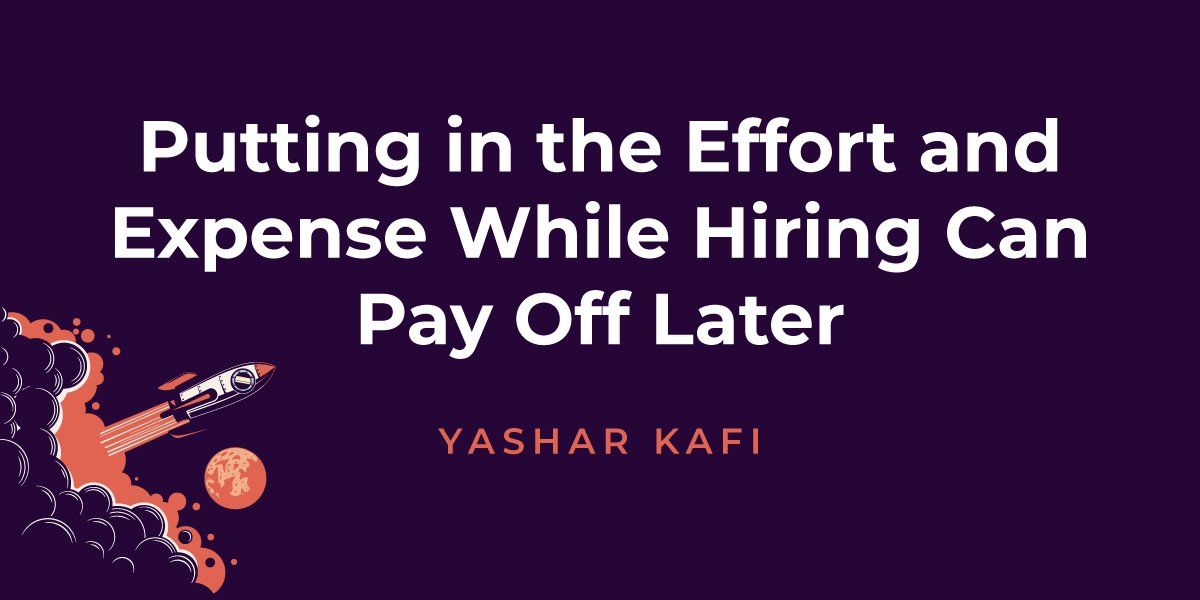Putting in the Effort and Expense While Hiring Can Pay Off Later
I’m beginning to see similarities in how today’s hiring practices mirror the haphazard world of online dating. Seriously, does anyone else feel like hiring qualified people has become somewhat like rapid-fire swiping on Tinder?
Think about it: Imagine how many qualified people apply for a job, and their resume gets dumped straight into a database that becomes a black hole because once vetted, it’s gone.
It’s pretty wild, and like determining your choice among a vast pool of potential dates on Tinder, the criteria for potential hires varies. And let’s face it, it can be based on just as subjective and trivial “must-haves” as those social media apps.
The Limiting Factors
Think about how many hiring managers say, “We want three to five years of experience.” But then someone with ten years of experience applies, and they say, “No, they’re overqualified.” Maddening, right?
When did somebody who is 35 years old versus an applicant who is 25 years old start to be deemed “over-qualified”—or when translated more expensive than you’d like to pay? If there’s a suitable person for the job, why don’t you hire them instead of just “swiping right” with the same picky mentality Tinder swipers have when seeking that unattainable perfect match? Examples are seen in comments like: “You’re too expensive, you’re too young, you’re too old, you’re overqualified, you have too many years of X, Y, and Z.”
Not only is that exhausting, but it’s also not productive and gets you no closer to getting your needs met (as an employer or otherwise). Not to mention, basing a decision on an applicant’s age is discrimination. As an employer, why wouldn’t you make an effort and at least talk to the person? Only then can you figure out if they’re a right fit culturally for your organization.
Imagine the possibilities if you keep an open mind and refuse to simply “swipe right” on a potential candidate because they don’t check all of the same boxes on “your list.” After all, maybe they have other traits that overshadow their four to six years of experience versus the required 10.
Putting in the Effort and Expense While Hiring Can Pay Off Later
You may be thinking: people don’t want to spend the time to talk to candidates if it’s going to be a waste of time. And how can you know?
My response to this is that whenever you’re hiring somebody, you’re going to have to go through the effort—and invest in both time and finances—whether you’re doing it internally (a cost to your internal recruiters) or externally (a cost to your external recruiters). You go through the process of vetting any number of candidates. So why wouldn’t you put the effort in to do it right the first time and make it the last instead of risking going through this same process over and over again? Common sense says you wouldn’t!
My point is that the old, traditional criteria (age, years of experience, specific degree) doesn’t always pan out. Currently, we should also (and I’d say even more so) be looking at whether or not that person is a cultural fit, with the right personality and attitude that will mesh with the corporate environment we are seeking to create and foster.
Taking a Humanistic Approach
So, how do we remedy this Tinder-like hiring dilemma? It will require a cultural shift in the way HR works. You need to trust recruiters. These recruiters need to have a cultural interest in your organization so they can then vet the right people. They have to know what they are looking for and be willing to put in the effort and time needed to find those people—even when it means looking beyond the hard data on the resume at first glance.
Instead of searching for an AI bot that can vet these people out—which does so without knowing what the actual individual is like—we should take a humanistic approach to understanding a way to assess a person’s potential without having to review a piece of paper (like the resume).
Now, as to exactly how to accomplish that feat, it’s one of those challenges we’ve been trying to solve for years. I’m definitely open to suggestions.




